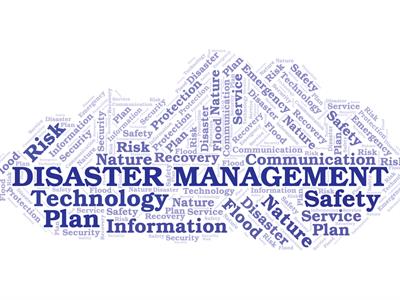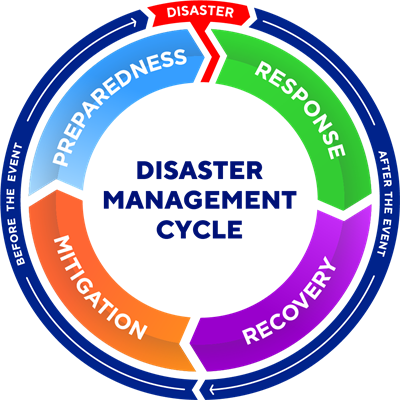PDF chapter test TRY NOW
What is Disaster Management?
Natural calamities come in different shapes and dimensions. Industrial explosions and structural failures, both of which are caused by human error, are examples of human-induced disasters.
Physical processes, such as earthquakes and droughts, produce natural disasters. Complex disasters include epidemics and armed wars, to name a few.

Disaster Management
The practice of efficient management and response to disasters is known as disaster management. It entails strategically giving priority to repair the harm caused by disasters. It also includes a systematic approach to managing disaster prevention, preparation, response, and recovery duties.
Prevention:
Disaster mitigation and prevention measures strive to limit the potential for disaster-related damage and suffering. While disaster management cannot prevent disasters, it can help to prevent them from getting worsened by ignoring cause elements and manageable hazards.
Actions performed to decrease the intensity of a disaster's impact are referred to as mitigation. Disasters can be considerably reduced by investing in measures that limit dangers.
The below are among some of the methods that disaster response professionals use to safeguard vulnerable communities and reduce hazards:
1. Increasing public knowledge of potential hazards and how to deal with them.
2. Providing information to the public on how to effectively prepare for all types of disasters.
3. Prediction and warning systems are being installed and strengthened.
Disaster Management is necessary or expedient for:
1. Prevention
2. Mitigation
3. Preparedness
4. Response
5. Recovery
6. Rehabilitation
Disaster Management Cycle:

Disaster Management Cycle
1. Prevention and Mitigation:
The activities that are conducted to prevent or lessen the negative impacts of a disaster in the short term and long term are known as disaster mitigation. On the one hand, they comprise political, legal, administrative, and infrastructure measures; on the other, they include educating vulnerable people and influencing their lifestyles and behaviours to lower catastrophe risk.
2. Preparedness:
Disaster preparedness aims to prevent or reduce losses and damage in the event of a disaster. This would include the readiness of all civic bodies, such as the civil administration, the fire department, hospitals, and the police force, among others. The third step of emergency management is preparedness.
3. Response, Recovery and Reconstruction:
The search and recovery phase, but also addressing survivors' basic humanitarian requirements, as well as aid from regional, national, and international authorities, are all part of the reaction phase.
After the immediate threat to human life has passed, the recovery period begins. The initial purpose of the recovery phase is to restore some degree of normalcy to the damaged area. During reconstruction, the property's location and construction materials are taken into account.
4. Early Warning:
An Early Warning System (EWS) is a collection of capabilities for generating and disseminating timely and relevant warning information about potential extreme occurrences or disasters (such as floods, droughts, fires, earthquakes, and tsunamis) that endanger people's lives.
The goal of this information is to assist individuals, communities, and organisations that are at risk to plan and respond effectively and in a timely manner in order to minimise the chance of harm, loss, or risk.
5. The Disaster Impact:
This is the "event of a hazard occurring in real time and affecting elements at risk".
The length of the event will be determined by the type of threat; for example, during an earthquake, ground shaking may occur in a matter of seconds. Flooding, on the other hand, may occur over a longer period of time.
